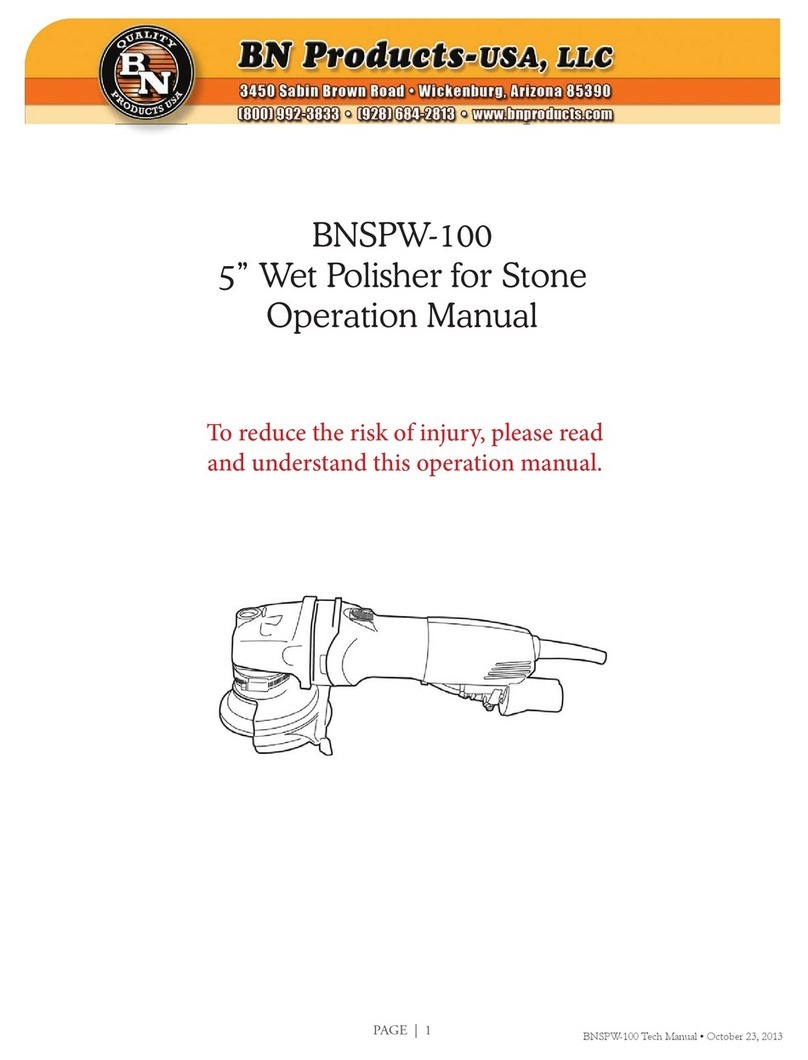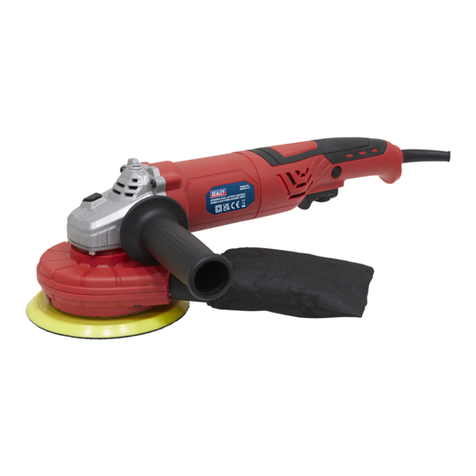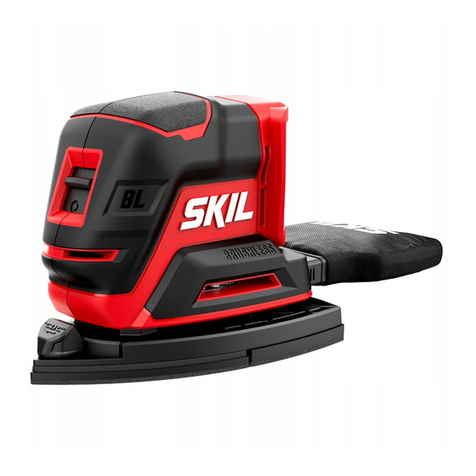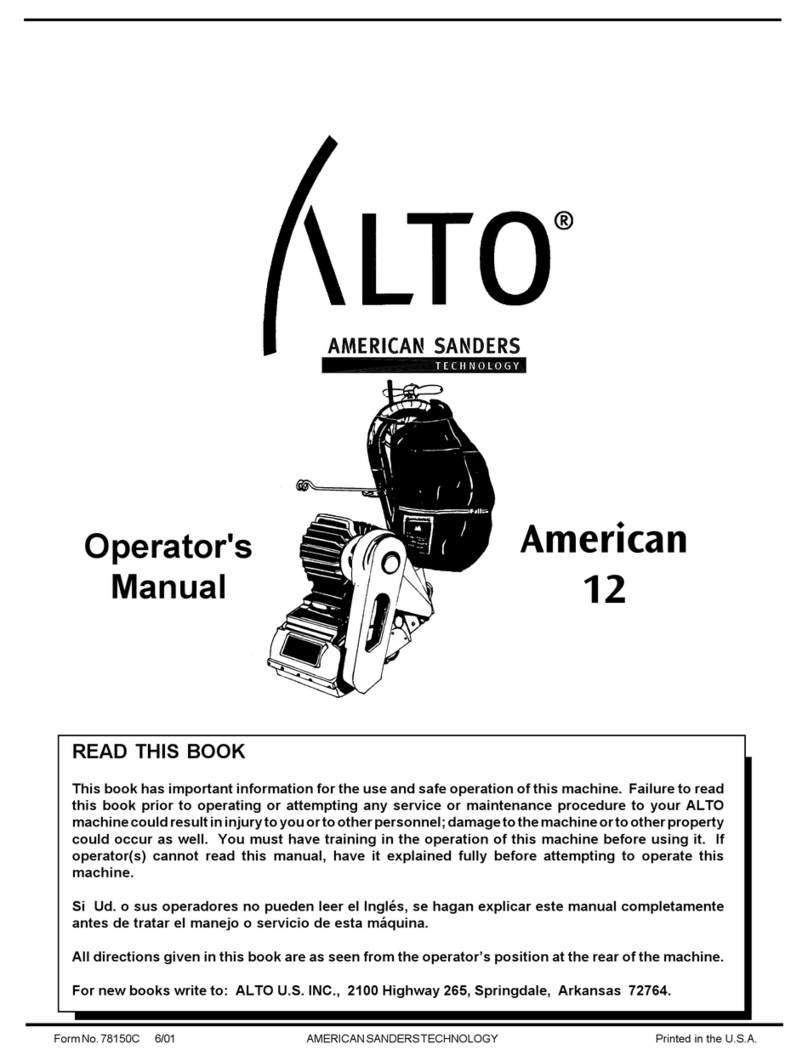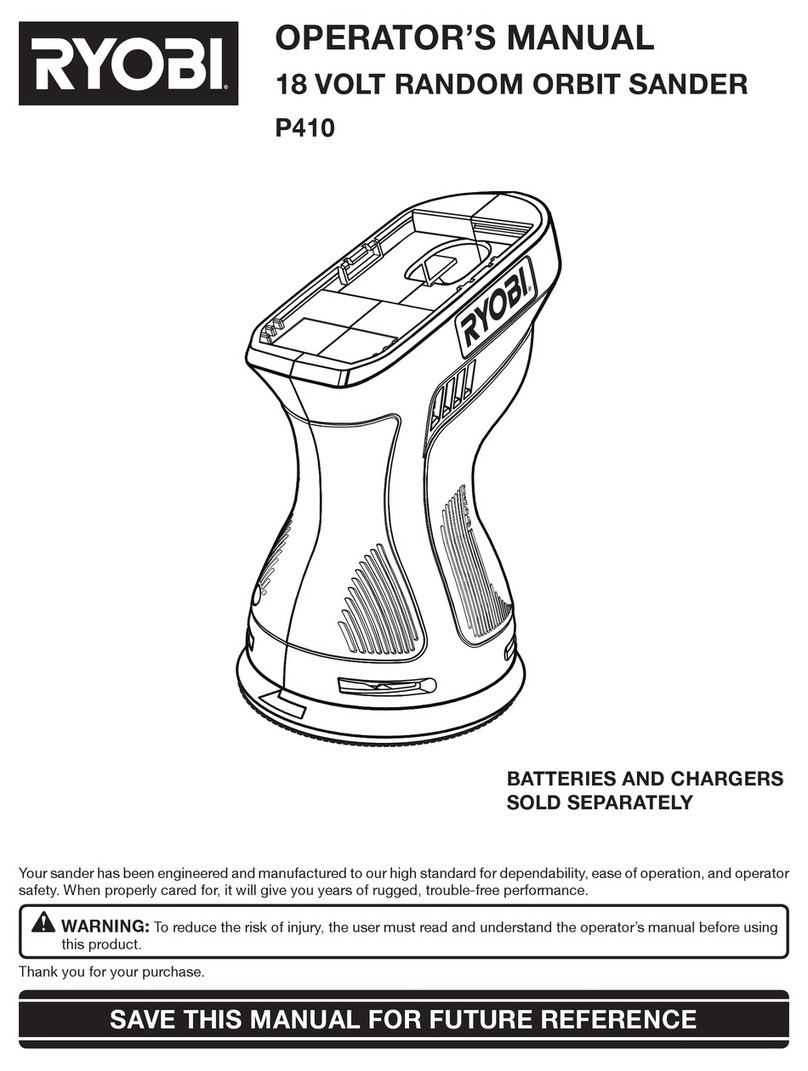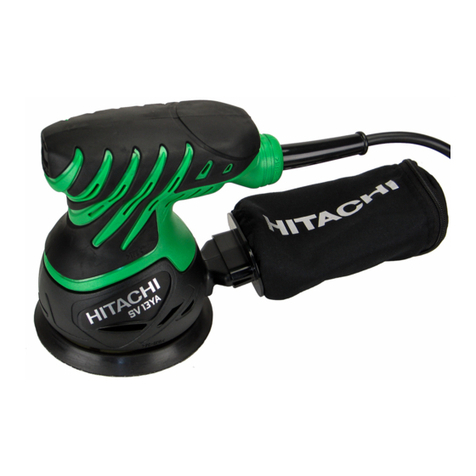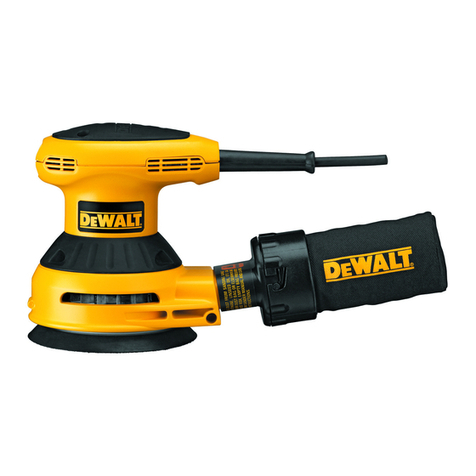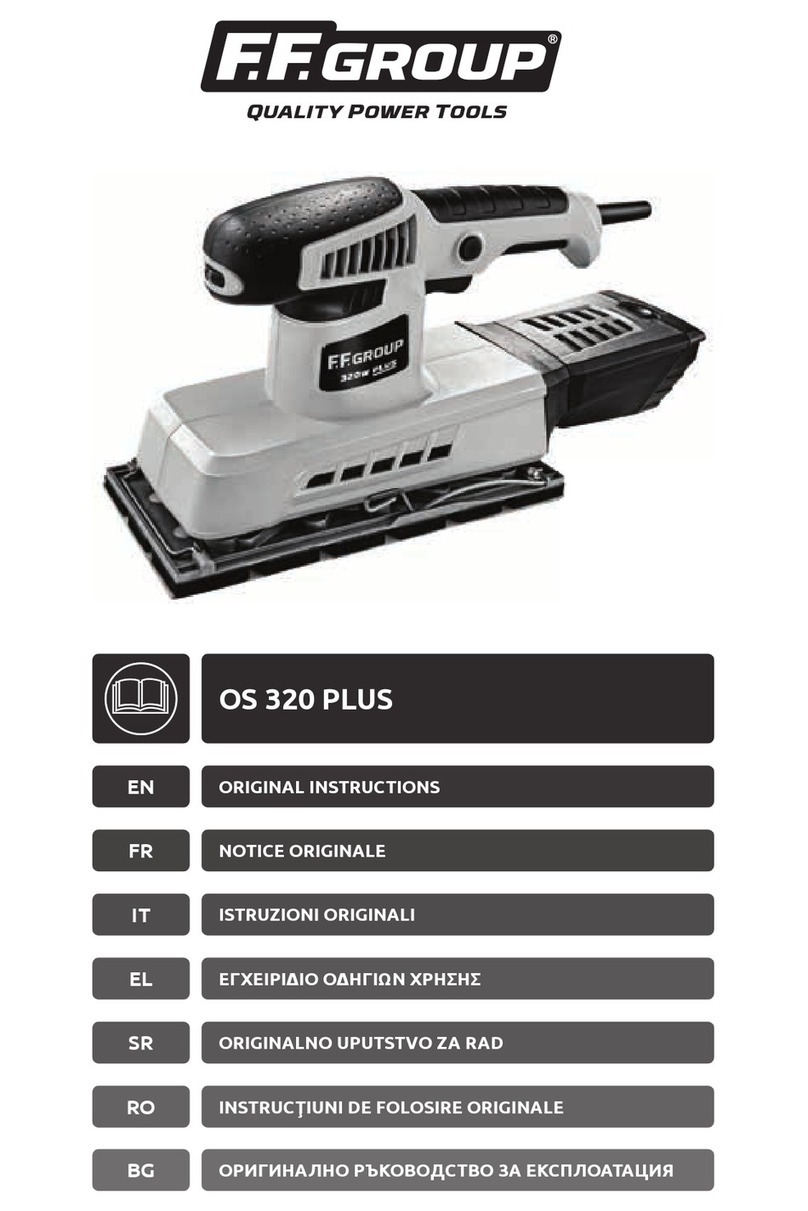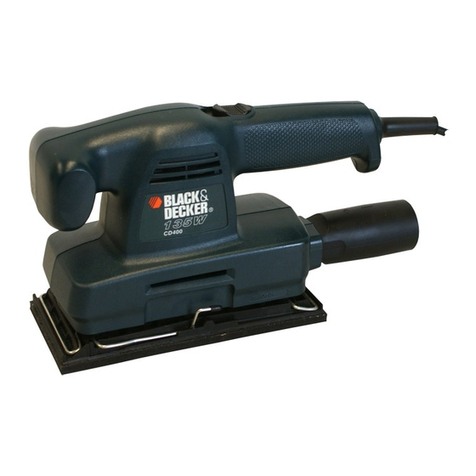PRO RANGE EPP1700PD User manual

1.2 GENERAL SAFETY
WARNING! Ensure Health & Safety, local authority, and general workshop practice regulations are adhered to when using this equipment.
Familiarise yourself with the application and limitations of the product, as well as the specific potential hazards peculiar to the polisher.
WARNING! Disconnect from the mains power and ensure the disc is at a complete standstill before changing accessories, servicing or
performing any maintenance.
Maintain the polisher in good condition (use an authorised service agent).
Replace or repair damaged parts. Use genuine parts only. Non-authorised parts may be dangerous and will invalidate the warranty.
WARNING! Keep all guards and holding screws in place, tight and in good working order. Check regularly for damaged parts. A guard or
any other part that is damaged must be repaired/replaced before the tool is next used.
Locate polisher in a suitable working area, keep area clean and tidy and free from unrelated materials. Ensure there is adequate
lighting.
Keep the polisher clean for best and safest performance.
Before each use check abrasive attachments for condition. If worn or damaged replace immediately.
Ensure there are no flammable or combustible materials near the work area.
WARNING! Wear approved eye safety protection, ear defenders and if dust is generated, respiratory protection.
Maintain correct balance and footing. Ensure the floor is not slippery and wear non-slip shoes.
1.1. ELECTRICAL SAFETY.
WARNING! It is the user’s responsibility to read, understand and comply with the following:
You must check all electrical equipment and appliances to ensure they are safe before using. You must inspect power supply leads, plugs and
all electrical connections for wear and damage. You must ensure the risk of electric shock is minimised by the installation of appropriate safety
devices. An RCCB (Residual Current Circuit Breaker) should be incorporated in the main distribution board. We also recommend that an RCD
(Residual Current Device) is used with all electrical products. It is particularly important to use an RCD with portable products that are plugged
into an electrical supply not protected by an RCCB. If in doubt consult a qualified electrician. You may obtain a Residual Current Device by
contacting your dealer. You must also read and understand the following instructions concerning electrical safety.
1.1.1. The Electricity At Work Act 1989 requires all portable electrical appliances, if used on business premises, to be tested by a
qualified electrician, using a Portable Appliance Tester (PAT), at least once a year.
1.1.2. The Health & Safety at Work Act 1974 makes owners of electrical appliances responsible for the safe condition of the appliance and
the safety of the appliance operator. If in any doubt about electrical safety, contact a qualified electrician.
1.1.3. Ensure the insulation on all cables and the product itself is safe before connecting to the mains power supply. See 1.1.1. & 1.1.2.
above and use a Portable Appliance Tester (PAT).
1.1.4. Ensure that cables are always protected against short circuit and overload.
1.1.5. Regularly inspect power supply, leads, plugs for wear and damage and all electrical
connections to ensure that none are loose.
1.1.6. Important: Ensure the voltage marked on the product is the same as the electrical power
supply to be used and check that plugs are fitted with the correct capacity fuse.
A 13 amp plug may require a fuse smaller than 13 amps for certain products
(subject to 1.1.10. below), see fuse rating at right.
1.1.7. DO NOT pull or carry the powered appliance by its power supply lead.
1.1.8. DO NOT pull power plugs from sockets by the power cable.
1.1.9. DO NOT use worn or damaged leads, plugs or connections. Immediately replace or have
repaired by a qualified electrician. A UK 3 pin plug with ASTA/BS approval is fitted. In case of
damage, cut off and fit a new plug according to the following instructions (discard old plug
safely).
(UK only - see diagram at right). Ensure the unit is correctly earthed via a three-pin plug.
a) Connect the GREEN/YELLOW earth wire to the earth terminal ‘E’.
b) Connect the BROWN live wire to live terminal ‘L’.
c) Connect the BLUE neutral wire to the neutral terminal ‘N’.
d) After wiring, check there are no bare wires, that all wires have been connected
correctly, that cable outer insulation extends beyond the cable restraint and that the restraint is tight.
Double insulated products are often fitted with live (BROWN) and neutral (BLUE) wires only. Double insulated products are always
marked with this symbol . To re-wire, connect the brown & blue wires as indicated above. DO NOT connect the brown or blue
to the earth terminal.
1.1.10. Cable extension reels. When a cable extension reel is used it should be fully unwound before connection. A cable reel with an RCD
fitted is recommended since any product which is plugged into the cable reel will be protected. The section of the cores of the cable
is important. We suggest 1.5mm2section as a minimum but to be absolutely sure that the capacity of the cable reel is suitable for this
product and for others that may be used in the other output sockets, we recommend the use of 2.5mm2section cable.
NOTE: The ER1700PD has an electronic speed control, which requires a ‘clean’ and stable power supply. Normal 230V mains
supply is suitable. However, the output from many petrol driven generators may not be suitable for this tool. ‘Inverter’ type
power supplies provide a much more stable output and should present no problem.
1. SAFETY
SUGGESTED FUSE
RATING: 13A
INSTRUCTIONS FOR:
POLISHER DIGITAL Ø180mm 1100W/230V
LIGHTWEIGHT
MODEL NO: EPP1700PD
Wear
Eye
Protection
Refer to
instruction
manual
Wear a
mask
Wear
Ear
Protection
Original Language Version
IMPORTANT: PLEASE READ THESE INSTRUCTIONS CAREFULLY. NOTE THE SAFE OPERATIONAL REQUIREMENTS, WARNINGS & CAUTIONS. USE THE PRODUCT
CORRECTLY AND WITH CARE FOR THE PURPOSE FOR WHICH IT IS INTENDED. FAILURE TO DO SO MAY CAUSE DAMAGE AND/OR PERSONAL INJURY AND WILL
INVALIDATE THE WARRANTY. KEEP THESE INSTRUCTIONS SAFE FOR FUTURE USE.
Thank you for purchasing this product. Manufactured to a high standard, this product will, if used according to these instructions,
and properly maintained, give you years of trouble free performance.
EPP1700PD Issue:1 - 04/03/16

Remove ill fitting clothing. Remove ties, watches, rings, and other loose jewellery and tie back long hair.
Keep children and unauthorised persons away from the working area.
Secure non-stable work piece with a clamp, vice or other adequate holding device.
Remove adjusting keys and wrenches from the machine and its vicinity before turning it on.
DO NOT use equipment for any purpose other than that for which it is designed.
DO NOT operate the polisher if any parts are damaged or missing as this may cause failure or possible personal injury.
WARNING! DO NOT sand any materials containing asbestos.
DO NOT switch the polisher on whilst the head is in contact with the work piece and avoid unintentional starting.
DO NOT get the polisher wet or use in damp or wet locations or areas where there is condensation.
DO NOT allow untrained persons to operate the polisher.
DO NOT operate the polisher when you are tired, under the influence of alcohol, drugs or intoxicating medication.
DO NOT use the polisher where there are flammable liquids, solids or gases such as paint solvents, etc.
DO NOT leave the polisher operating unattended.
DO NOT carry the polisher with your finger on the power switch.
DO NOT pull the cord to remove the plug from the power supply.
Use a qualified person to lubricate and maintain the polisher.
When not in use unplug from the mains power supply and store in a safe, dry, childproof area.
LEAD PAINT WARNING! Paint once contained lead as a traditional ingredient. Contact with the dust from the removal of such paint is toxic
and must therefore be avoided. The following action must be taken before using machine as a sander:
1. User must determine potential hazard relating to age of paint to be removed. (Modern paints do not have lead content).
2. DANGER! Keep all persons and pets away from the working area. The following are particularly vulnerable to the effects of lead
paint dust: pregnant women, babies and children.
3. Wear appropriate Personal Protective Equipment. A full range of Personal Protective Equipment is available from your dealer.
4. Take adequate measures to contain paint dust, flakes and scrapings. Wear safety equipment, as in (3) above and thoroughly clean
all areas when task is complete.
5. Ensure the paint waste is disposed of in sealed bags or containers according to local regulations.
3. SPECIFICATIONS
2. INTRODUCTION
4. ASSEMBLY
WARNING! Ensure unit is not plugged into mains before
attempting any assembly.
4.1. Attaching the side handle.
4.1.1. Traditional Handle (fig.1):
Attach the side handle to either side by screwing into the
desired fixing hole in the head.
4.1.2. Over the Top Handle (fig.2):
Slide both sides of the handle over the fixing holes (fig.3)
and secure with the hex nuts supplied.
4.2. Attaching the backing pad.
4.2.1. With the machine disconnected from the electrical supply,
spin the backing pad onto the spindle until resistance from
the motor is felt. The disc will tighten itself sufficiently when in
use.
4.3. Removing the backing pad.
With the machine disconnected from the electrical supply,
depress the spindle lock button (fig.5). Turn the backing pad
by hand until the spindle lock is felt to engage. Turn the
backing pad clockwise (viewed from above) to release and
remove.
4.4. Attaching the lambswool bonnet.
Turn the edge of the bonnet back (fig.4), then place the backing
disc centrally on the `hook and loop fixing. When fixed, turn the
edge of the bonnet back over the edge of the backing pad.
Model ..............................ER1700PD
Pad Size:..............................Ø180mm
Thread Size: .........................M14 x 2mm
No Load Speed: ...................... 0-3000rpm
Power: ..................................1100W
Supply: ..................................230V
Weight: ..................................2.5kg
Noise Power:.............................82dBA
Noise Pressure:...........................71dBA
Vibration: ..............................3.36m/s²
Uncertainty: ............................1.68m/s²
Powerful 1100W motor enclosed in a lightweight housing. Maintains high torque levels at low speeds, ideal for polishing. Digital display for
variable speed control from 1000-3000rpm, stepping-up in 500rpm increments. Features a slide button on/off switch allowing for a smooth,
comfortable main handle grip. Spindle lock for fast and easy pad/foam head changes. Choice of two side handles:
.
traditional or over-the-top
style. Supplied in robust storage case.
g.1
g.2
g.3
Original Language Version EPP1700PD Issue:1 - 04/03/16

6. MAINTENANCE
WARNING! Before attempting any maintenance ensure the unit is
unplugged from the mains power supply.
6.1. Keep the machine clean and dry. Do not use abrasives to clean the unit.
Ensure all external head screws are tight.
6.2. Clean regularly by blowing a jet of compressed air through side vents
to ensure motor ventilation is kept clear.
WARNING! Wear approved safety eye protection and, if necessary,
respiratory protection.
5. OPERATION (FIG.5)
WARNING! The warnings, cautions and instructions discussed in this manual cannot cover all possible conditions and situations
that may occur. It must be understood that common sense and caution are factors which cannot be built into this product, but must
be applied by the operator.
g.5
g.4
5.1. Once connected to electrical supply, move the on/off switch
to the 'I' position.
5.1.1. At this point at this point, the speed indicator will show '00'.
5.1.2. To start the machine, press the '+' button; the polisher will run at
1000rpm. Each subsequent press will increase the speed by 500rpm
up to a maximum of 3000rpm.
5.1.3. Thespeedindicationneedstobemultipliedby100tondtheactual
speed.
NOTE: Each time the machine is switched off, the speed setting will
revert to zero.
NOTE: It is our policy to continually improve products and as such we reserve the right to alter data, specifications and component parts without prior notice.
IMPORTANT: No liability is accepted for incorrect use of this product.
WARRANTY: Guarantee is 12 months from purchase date, proof of which will be required for any claim.
The Pro Range Group
Car Paint Warehouse –Bristol BS4 5QR . Tel 01173 009 058
MDA Bitec – Telford TF7 4QH. Tel 01952 583203
B.S.Supplies – Stoke on Trent ST6 2PZ Tel 01782 209527
M & P Enterprise – Chester CH4 8RJ Tel 01244 677123
Environmental Protection
Recycle unwanted materials instead of disposing of them as waste. All tools, accessories and packaging should be
sorted, taken to a recycling centre and disposed of in a manner which is compatible with the environment.
When the product becomes completely unserviceable and requires disposal, drain off any fluids (if applicable)
into approved containers and dispose of the product and the fluids according to local regulations.
WEEE Regulations
Dispose of this product at the end of its working life in compliance with the EU Directive on
Waste Electrical and Electronic Equipment (WEEE). When the product is no longer required, it must be disposed
of in an environmentally protective way. Contact your local solid waste authority for recycling information.
Original Language Version EPP1700PD Issue:1 - 04/03/16

WARNING! – Risk of Hand Arm Vibration Injury.
This tool may cause Hand Arm Vibration Syndrome if its use is not managed adequately.
This tool is subject to the vibration testing section of the Machinery Directive 2006/42/EC.
This tool is to be operated in accordance with these instructions.
Measured vibration emission value (a): ..........3.36 m/s²
Uncertainty value (k):..........................1.68 m/s²
Please note that the application of the tool to a sole specialist task may produce a different average vibration emission. We recommend that a
specific evaluation of the vibration emission is conducted prior to commencing with a specialist task.
A health and safety assessment by the user (or employer) will need to be carried out to determine the suitable duration of use for each tool.
NB: Stated Vibration Emission values are type-test values and are intended to be typical.
Whilst in use, the actual value will vary considerably from and depend on many factors.
Such factors include; the operator, the task and the inserted tool or consumable.
NB: ensure that the length of leader hoses is sufficient to allow unrestricted use, as this also helps to reduce vibration.
The state of maintenance of the tool itself is also an important factor, a poorly maintained tool will also increase the risk of Hand Arm Vibration
Syndrome.
Health surveillance.
We recommend a programme of health surveillance to detect early symptoms of vibration injury so that management procedures can be
modified accordingly.
Personal protective equipment.
We are not aware of any personal protective equipment (PPE) that provides protection against vibration injury that may result from the
uncontrolled use of this tool. We recommend a sufficient supply of clothing (including gloves) to enable the operator to remain warm and dry
and maintain good blood circulation in fingers etc. Please note that the most effective protection is prevention, please refer to the Correct Use
and Maintenance section in these instructions. Guidance relating to the management of hand arm vibration can be found on the HSC website
www.hse.gov.uk - Hand-Arm Vibration at Work.
Table of contents
Popular Sander manuals by other brands
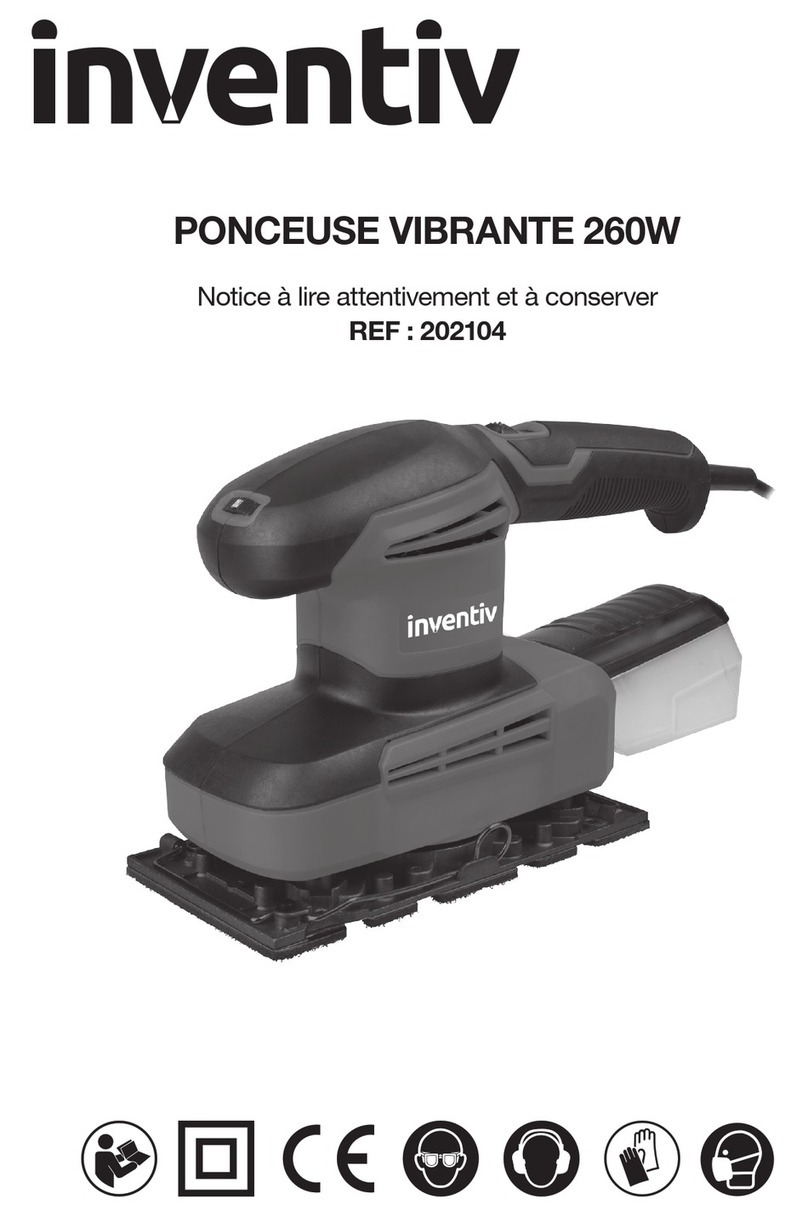
inventiv
inventiv 202104 Safety and operating manual

Casals
Casals VLO280E manual
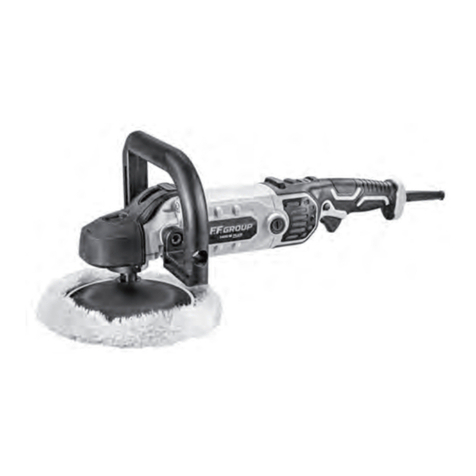
F.F. Group
F.F. Group PE 180/1400 E PLUS Original instructions
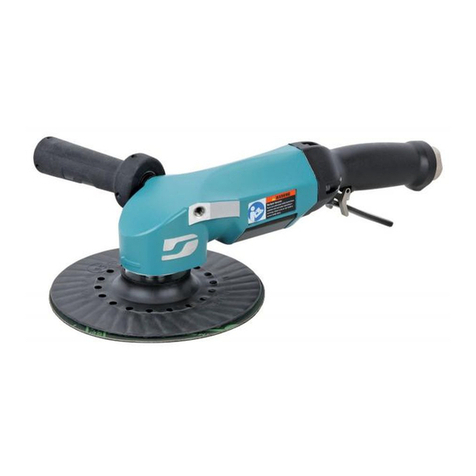
Dynabrade
Dynabrade 53270 Safety, operation and maintenance manual
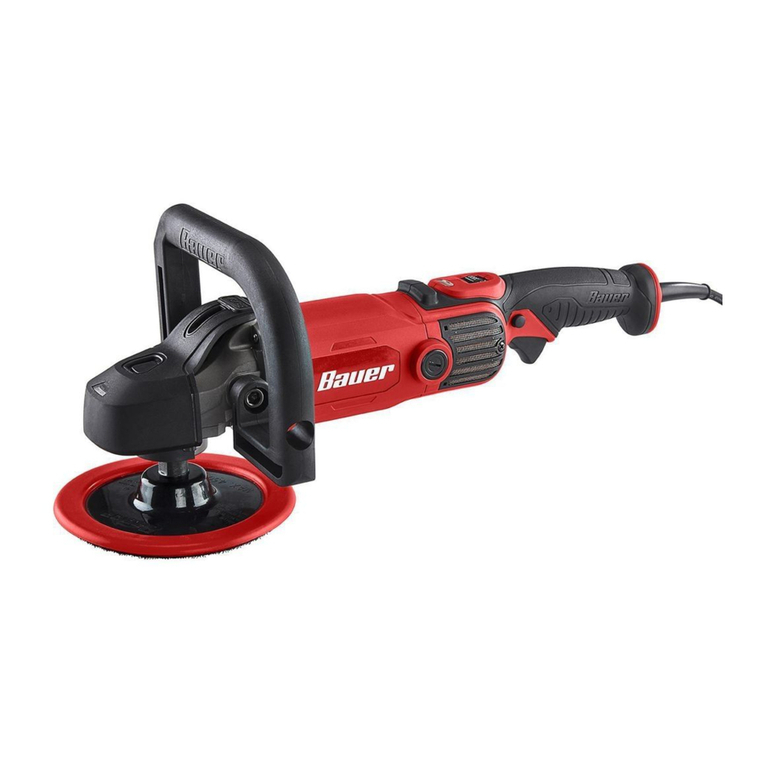
Bauer
Bauer 1913E-B user manual
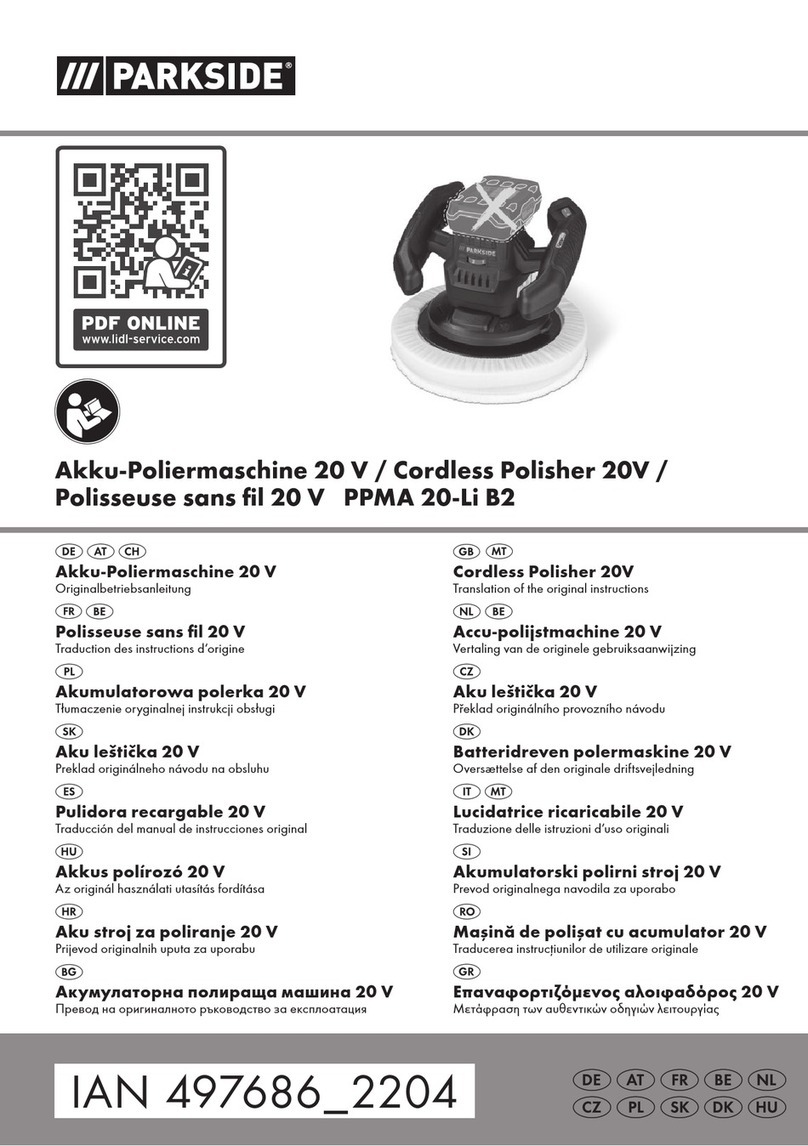
Parkside
Parkside PPMA 20-Li B2 Translation of the original instructions
